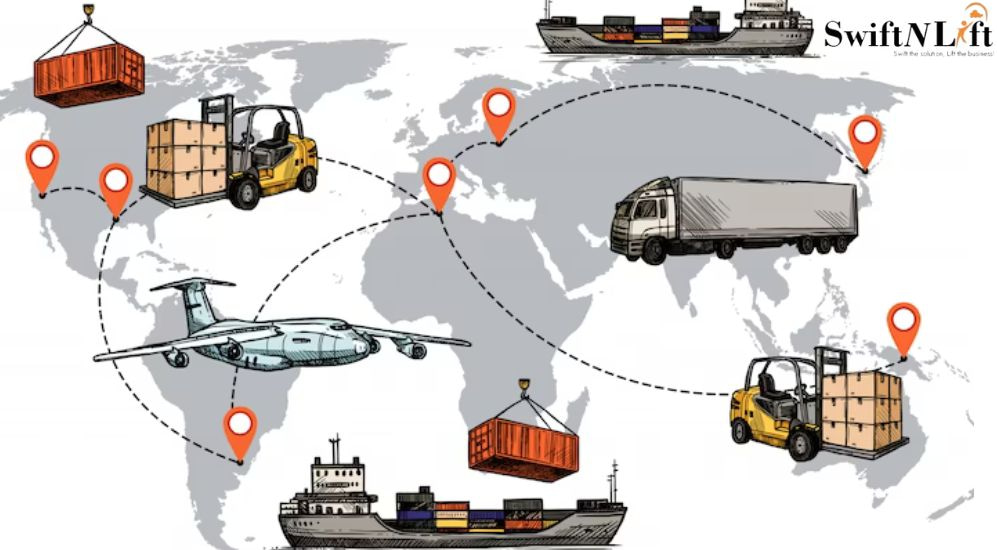
The Impending Impact of Costly Decarbonization Measures on Global Shipping: The Potential Rise in Export and Import Costs from January 2027
Global shipping has long been the lifeblood of international trade, facilitating the movement of goods across borders and connecting economies worldwide. However, the industry is now facing a significant challenge in the form of decarbonization. As the world grapples with the urgency of combating climate change, shipping companies are under pressure to adopt costly measures to reduce their carbon emissions. This article delves into the potential consequences of these decarbonization efforts, focusing on the foreseen increase in export and import costs from January 2027.
The Importance of Global Shipping:
Global shipping plays a vital role in the modern interconnected world. Approximately 90% of global trade relies on maritime transport, enabling the efficient movement of goods on a massive scale. It has been the backbone of international trade, supporting economic growth and prosperity. However, the environmental impact of shipping, particularly in terms of greenhouse gas emissions, cannot be ignored. The industry is responsible for a significant portion of global carbon dioxide (CO2) emissions, which has prompted urgent action to mitigate its environmental footprint.
The Drive for Decarbonization:
The International Maritime Organization (IMO), a specialized agency of the United Nations, has taken a leading role in addressing shipping’s carbon emissions. In 2018, the IMO adopted an ambitious strategy to reduce total greenhouse gas emissions from international shipping by at least 50% compared to 2008 levels by the year 2050. Achieving this goal necessitates the implementation of costly decarbonization measures.
The costliest measure proposed is the transition to low-carbon or zero-carbon fuels, such as hydrogen or ammonia, as alternatives to traditional fossil fuels. These fuels offer the potential to significantly reduce shipping’s carbon footprint but come at a high cost. The production, storage, and distribution infrastructure required for these fuels would require substantial investment and technological advancements.
Additionally, retrofitting existing ships with new technologies and building new vessels that comply with stricter environmental standards also contribute to the mounting expenses. The implementation of energy-efficient technologies, the adoption of wind-assisted propulsion systems, and the optimization of routes and operations are further avenues that shipping companies are exploring to reduce emissions. However, these initiatives are not without their financial implications.
The Potential Increase in Export and Import Costs:
The transition towards a more sustainable shipping industry undoubtedly comes at a price. The investment required to meet decarbonization targets is expected to be substantial, and these costs are likely to be passed on to consumers. As shipping companies grapple with the financial burden of implementing decarbonization measures, export and import costs are likely to rise.
One of the primary drivers behind the potential increase in costs is the higher price of low-carbon or zero-carbon fuels. These fuels are still in the early stages of development and production, lacking the economies of scale enjoyed by traditional fossil fuels. Consequently, their prices are significantly higher, and shipping companies will have to bear the brunt of these expenses initially.
Moreover, the retrofitting and construction of ships to comply with stricter environmental regulations will also contribute to higher costs. Retrofitting existing vessels to meet new standards can be a costly and time-consuming process. Similarly, building new ships with sustainable technologies and materials adds to the overall expenditure.
The effects of increased costs in the shipping industry are not confined to the shipping companies themselves. Importers and exporters will also be impacted as the higher expenses incurred by shipping companies are likely to be passed down the supply chain. Ultimately, consumers may face increased prices for imported goods, impacting affordability and consumption patterns.
Conclusion:
The global shipping industry is on the brink of a significant transformation driven by the urgent need to reduce carbon emissions. While decarbonization measures are necessary to combat climate change, they come at a considerable cost. From January 2027 onwards, the export and import costs associated with shipping are expected to increase as shipping companies invest in costly decarbonization measures.
The higher prices of low-carbon or zero-carbon fuels, retrofitting existing ships, and constructing new vessels will contribute to these rising costs. Importers and exporters, as well as consumers, may bear the brunt of these expenses, leading to potential shifts in trade patterns and consumption habits.
To minimize the impact on global trade and ensure a smooth transition, collaboration among governments, shipping companies, and other stakeholders is crucial. Encouraging research and development in sustainable fuels, providing financial incentives, and establishing international frameworks for carbon pricing are among the strategies that can facilitate the transition to a greener shipping industry without excessively burdening the global economy.

